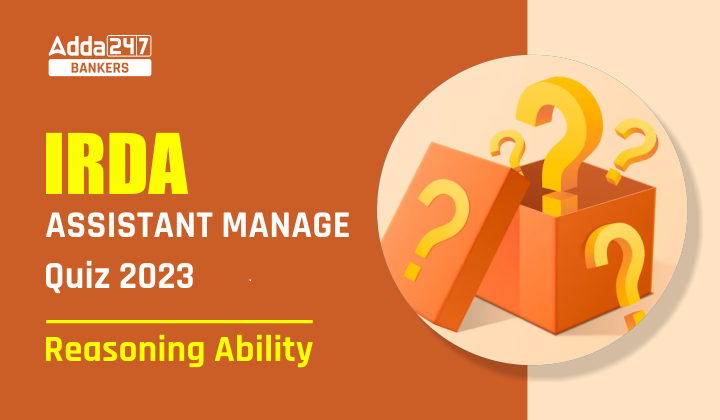Directions (1-5): On the basis of the numbers given below, answer the following questions:
266 789 456 763 279
Q1. What is the difference between the two numbers which are exactly divisible by 3 but not by 6?
(a) 26
(b) 226
(c) 333
(d) 612
(e) None of these
Q2. If all the digits within the number are arranged in decreasing order, then if the number at unit place is odd, 1 is added to it. Find, which of the following will be the sum obtained by adding all the digits at unit place of all the numbers?
(a) 33
(b) 23
(c) 20
(d) 30
(e) None of these
Q3. If we subtract 1 from even numbers, then what will be the sum of the digits at unit’s place of all the numbers?
(a) 31
(b) 32
(c) 33
(d) 34
(e) None of these
Q4. If we add 3 to every even digit which is less than 7 within the number, which one of the following will become the second highest number?
(a) 266
(b) 789
(c) 456
(d) 763
(e) 279
Q5. If all the digits within a number are arranged in such a way that even digits (within a number) are arranged first then the odd digits are arranged in increasing order. Which one of the following is the third lowest number?
(a) 266
(b) 789
(c) 456
(d) 763
(e) 279
Directions (6-10): Answer the following questions based on the alphanumeric-series given below:
A @ D 7 M Q % 5 $ F 6 K L & 4 R # N U 5
Q6. If the symbols followed by consonants interchange their positions with each other, then which element is third from the right end?
(a) U
(b) #
(c) N
(d) 5
(e) None of these
Q7. Based on the given arrangement which of the following group of elements will be next?
AD7 Q5$ 6L& ?
(a) F4K
(b) KS7
(c) RNU
(d) C4H
(e) LS1
Q8. Which of the following is second to the left of twelfth element from the right end if all the symbols are dropped?
(a) F
(b) D
(c) 7
(d) M
(e) None of these
Q9. If the numbers which are preceded by letters interchanged their positions with those letters, after that those letters were changed to the next letter according to alphabetical series, then which of the following elements will be fourth from the left end and eleventh from the right end respectively?
(a) F and 7
(b) 6 and D
(c) A and $
(d) E and 6
(e) None of these
Q10. How many letters are there which are preceded by symbol and followed by number in the given series?
(a) None
(b) One
(c) Two
(d) Three
(e) More than three
Solutions
Solution (1-5):
S1. Ans. (e)
Sol. First, we have to find the numbers which are divisible by 3 but not by 6. The numbers are 789 and 279.
So, difference between these numbers is 510.
S2. Ans. (c)
Sol. When all the digits within the number are arranged in decreasing order, we get:
662 987 654 763 972
If the digit at unit place is odd, 1 must be added to it i.e.,
662 988 654 764 972
On adding the digits at unit place of all the numbers, we get 20 (i.e., 2 + 8 + 4 + 4 + 2).
S3. Ans. (a)
Sol. On subtracting 1 from all even numbers, we get: 265 789 455 763 279.
On adding digit at unit’s place, we get 31 (5 + 9 + 5 + 3 + 9).
S4. Ans. (b)
Sol. On adding 3 to every even digit which is less than 7, we get:
599 789 759 793 579
Arranging the numbers, 579 < 599 < 759 < 789 < 793
Clearly, we can see that 789 is the second highest number.
S5. Ans. (c)
Sol. When all the numbers are arranged in such a way that even digits are arranged first then the odd digits are arranged in increasing order, we get: 266 879 465 637 279
On arranging the numbers, we get: 266 < 279 < 465 < 637 < 879
Clearly, 456 (465 in the required number) is the third lowest number.
Solution (6-10):
S6. Ans. (b)
Sol. New Arrangement: A D @ 7 M Q % 5 F $ 6 K L & 4 R N # U 5
So, third element from the right end = #
S7. Ans. (c)
Sol. RNU is the correct answer.
S8. Ans. (b)
Sol. New series: A D 7 M Q 5 F 6 K L 4 R N U 5
2nd to the left of 12th from the right = 14th from the right end
So, 14th from the right end = D
S9. Ans. (d)
Sol. New Arrangement: A @ 7 E M Q % 5 $ 6 G K L & 4 R # N 5 V
4th element from the left end = E , 11th element from the right end = 6






 GA Capsule for SBI Clerk Mains 2025, Dow...
GA Capsule for SBI Clerk Mains 2025, Dow...
 The Hindu Review October 2022: Download ...
The Hindu Review October 2022: Download ...
 Without These Documents, Your Bank Exam ...
Without These Documents, Your Bank Exam ...





